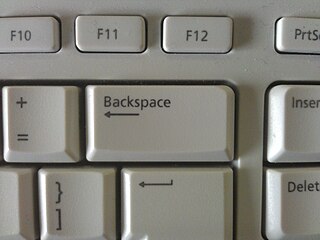In computing, the Internet Message Access Protocol (IMAP) is an Internet standard protocol used by email clients to retrieve email messages from a mail server over a TCP/IP connection. IMAP is defined by RFC 3501.
The Lightweight Directory Access Protocol (LDAP) is an open, vendor-neutral, industry standard application protocol for accessing and maintaining distributed directory information services over an Internet Protocol (IP) network. Domain Directory services play an important role in developing intranet and Internet applications by allowing the sharing of information about users, systems, networks, services, and applications throughout the network. As such, directory services may provide any organized set of records, often with a hierarchical structure, such as a corporate email directory. Similarly, a telephone directory is a list of subscribers with an address and a phone number.
In computing, the Post Office Protocol (POP) is an application-layer Internet standard protocol used by e-mail clients to retrieve e-mail from a mail server.

In linguistics, specifically phonetics and phonology, schwa is the mid central vowel sound in the middle of the vowel chart, denoted by the IPA symbol, or another vowel sound close to that position. An example in English is the vowel sound of the "a" in the word about. Schwa in English is mainly found in unstressed positions, but in some other languages it occurs more frequently as a stressed vowel.
In the context of relational databases, a foreign key is a set of attributes subject to a certain kind of inclusion dependency constraints, specifically a constraint that the tuples consisting of the foreign key attributes in one relation, R, must also exist in some other relation, S, and furthermore that those attributes must also be a candidate key in S. In simpler words, a foreign key is a set of attributes that references a candidate key. For example, a table called TEAM may have an attribute, MEMBER_NAME, which is a foreign key referencing a candidate key, PERSON_NAME, in the PERSON table. Since MEMBER_NAME is a foreign key, any value existing as the name of a member in TEAM must also exist as a person's name in the PERSON table; in other words, every member of a TEAM is also a PERSON.
In computer programming, create, read, update, and delete (CRUD) are the four basic functions of persistent storage. Alternate words are sometimes used when defining the four basic functions of CRUD, such as retrieve instead of read, modify instead of update, or destroy instead of delete. CRUD is also sometimes used to describe user interface conventions that facilitate viewing, searching, and changing information, often using computer-based forms and reports. The term was likely first popularized by James Martin in his 1983 book Managing the Data-base Environment. The acronym may be extended to CRUDL to cover listing of large data sets which bring additional complexity such as pagination when the data sets are too large to be easily held in memory.
In the context of SQL, data definition or data description language (DDL) is a syntax for creating and modifying database objects such as tables, indexes, and users. DDL statments are similar to a computer programming language for defining data structures, especially database schemas. Common examples of DDL statements include CREATE, ALTER, and DROP.

Backspace← Backspace is the keyboard key that originally pushed the typewriter carriage one position backwards and in modern computer systems moves the display cursor one position backwards, deletes the character at that position, and shifts back the text after that position by one position.

In computing, rm is a basic command on Unix and Unix-like operating systems used to remove objects such as computer files, directories and symbolic links from file systems and also special files such as device nodes, pipes and sockets, similar to the del command in MS-DOS, OS/2, and Microsoft Windows. The command is also available in the EFI shell.
In the database structured query language (SQL), the DELETE statement removes one or more records from a table. A subset may be defined for deletion using a condition, otherwise all records are removed. Some database management systems (DBMSs), like MySQL, allow deletion of rows from multiple tables with one DELETE statement.
Deletion or delete may refer to:
A deleted scene is footage that has been removed from the final version of a film or television show.
The delete control character is the last character in the ASCII repertoire, with the code 127. It is supposed to do nothing and was designed to erase incorrect characters on paper tape. It is denoted as ^? in caret notation and is U+007F in Unicode.
Deletionpedia is an online archive wiki containing articles deleted from the English Wikipedia. Its version of each article includes a header with more information about the deletion such as whether a speedy deletion occurred, where the deletion discussion about the article can be found and which editor deleted the article. The original Deletionpedia operated from February to September 2008. The site was restarted under new management in December 2013.
Precautionary statements form part of the Globally Harmonized System of Classification and Labelling of Chemicals (GHS). They are intended to form a set of standardized phrases giving advice about the correct handling of chemical substances and mixtures, which can be translated into different languages. As such, they serve the same purpose as the well-known S-phrases, which they are intended to replace.
Mysterii Paschalis is an apostolic letter issued motu proprio by Pope Paul VI on 14 February 1969. It reorganized the liturgical year of the Roman Rite and revised the liturgical celebrations of Jesus Christ and the saints in the General Roman Calendar.
Control-Alt-Delete is a computer keyboard command on IBM PC compatible computers, invoked by pressing the Delete key while holding the Control and Alt keys: Ctrl+Alt+Delete. The function of the key combination differs depending on the context but it generally interrupts or facilitates interrupting a function. For instance, in pre-boot environment or in DOS, Windows 3.0 and earlier versions of Windows or OS/2, the key combination reboots the computer. Starting with Windows 95, the key combination invokes a task manager or security related component that facilitates ending a Windows session or killing a frozen application.

The delete key is a key on most computer keyboards which typically is used to delete either the character ahead of or beneath the cursor, or the currently-selected object. The key is sometimes referred to as the "forward delete" key. This is because the backspace key also deletes characters, but to the left of the cursor. On many keyboards, such as most Apple keyboards, the key with the backspace function is also labelled "delete".

Jigsaw is a form of encrypting ransomware malware created in 2016. It was initially titled "BitcoinBlackmailer" but later came to be known as Jigsaw due to featuring an image of Billy the Puppet from the Saw film franchise. The malware encrypts computer files and gradually deletes them unless a ransom is paid to decrypt the files.





